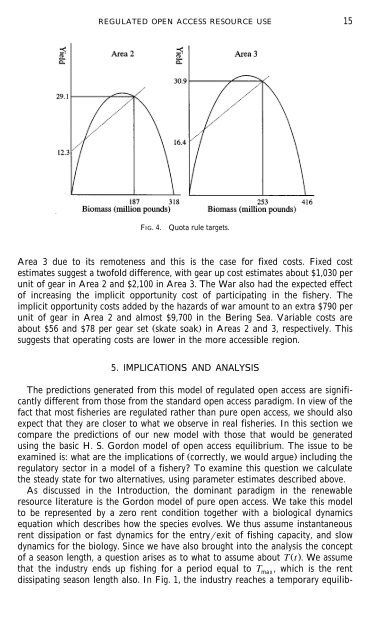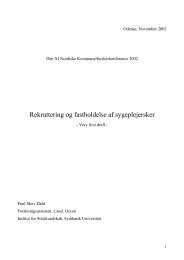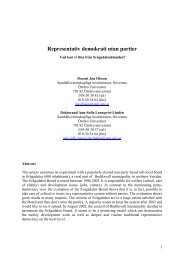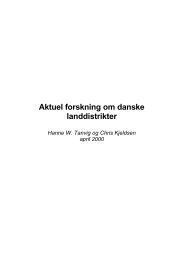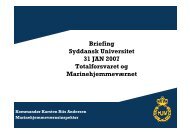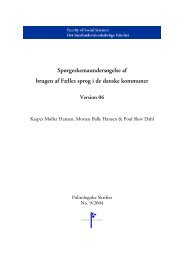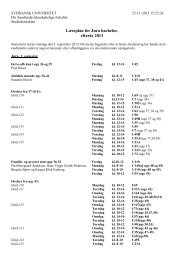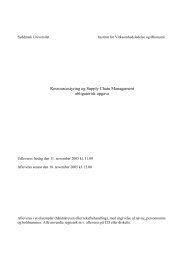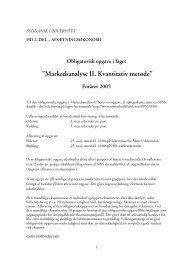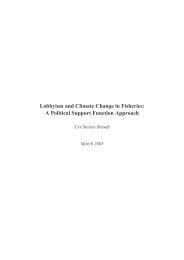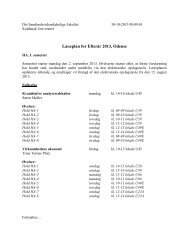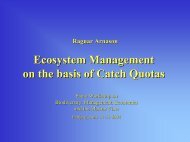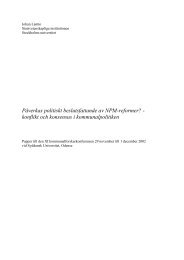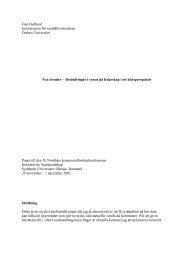A Model of Regulated Open Access Resource Use
A Model of Regulated Open Access Resource Use
A Model of Regulated Open Access Resource Use
Create successful ePaper yourself
Turn your PDF publications into a flip-book with our unique Google optimized e-Paper software.
REGULATED OPEN ACCESS RESOURCE USE 15<br />
FIG. 4.<br />
Quota rule targets.<br />
Area 3 due to its remoteness and this is the case for fixed costs. Fixed cost<br />
estimates suggest a tw<strong>of</strong>old difference, with gear up cost estimates about $1,030 per<br />
unit <strong>of</strong> gear in Area 2 and $2,100 in Area 3. The War also had the expected effect<br />
<strong>of</strong> increasing the implicit opportunity cost <strong>of</strong> participating in the fishery. The<br />
implicit opportunity costs added by the hazards <strong>of</strong> war amount to an extra $790 per<br />
unit <strong>of</strong> gear in Area 2 and almost $9,700 in the Bering Sea. Variable costs are<br />
about $56 and $78 per gear set Ž skate soak.<br />
in Areas 2 and 3, respectively. This<br />
suggests that operating costs are lower in the more accessible region.<br />
5. IMPLICATIONS AND ANALYSIS<br />
The predictions generated from this model <strong>of</strong> regulated open access are significantly<br />
different from those from the standard open access paradigm. In view <strong>of</strong> the<br />
fact that most fisheries are regulated rather than pure open access, we should also<br />
expect that they are closer to what we observe in real fisheries. In this section we<br />
compare the predictions <strong>of</strong> our new model with those that would be generated<br />
using the basic H. S. Gordon model <strong>of</strong> open access equilibrium. The issue to be<br />
examined is: what are the implications <strong>of</strong> Ž correctly, we would argue.<br />
including the<br />
regulatory sector in a model <strong>of</strong> a fishery? To examine this question we calculate<br />
the steady state for two alternatives, using parameter estimates described above.<br />
As discussed in the Introduction, the dominant paradigm in the renewable<br />
resource literature is the Gordon model <strong>of</strong> pure open access. We take this model<br />
to be represented by a zero rent condition together with a biological dynamics<br />
equation which describes how the species evolves. We thus assume instantaneous<br />
rent dissipation or fast dynamics for the entryexit <strong>of</strong> fishing capacity, and slow<br />
dynamics for the biology. Since we have also brought into the analysis the concept<br />
<strong>of</strong> a season length, a question arises as to what to assume about TŽ.<br />
t . We assume<br />
that the industry ends up fishing for a period equal to T max, which is the rent<br />
dissipating season length also. In Fig. 1, the industry reaches a temporary equilib-


